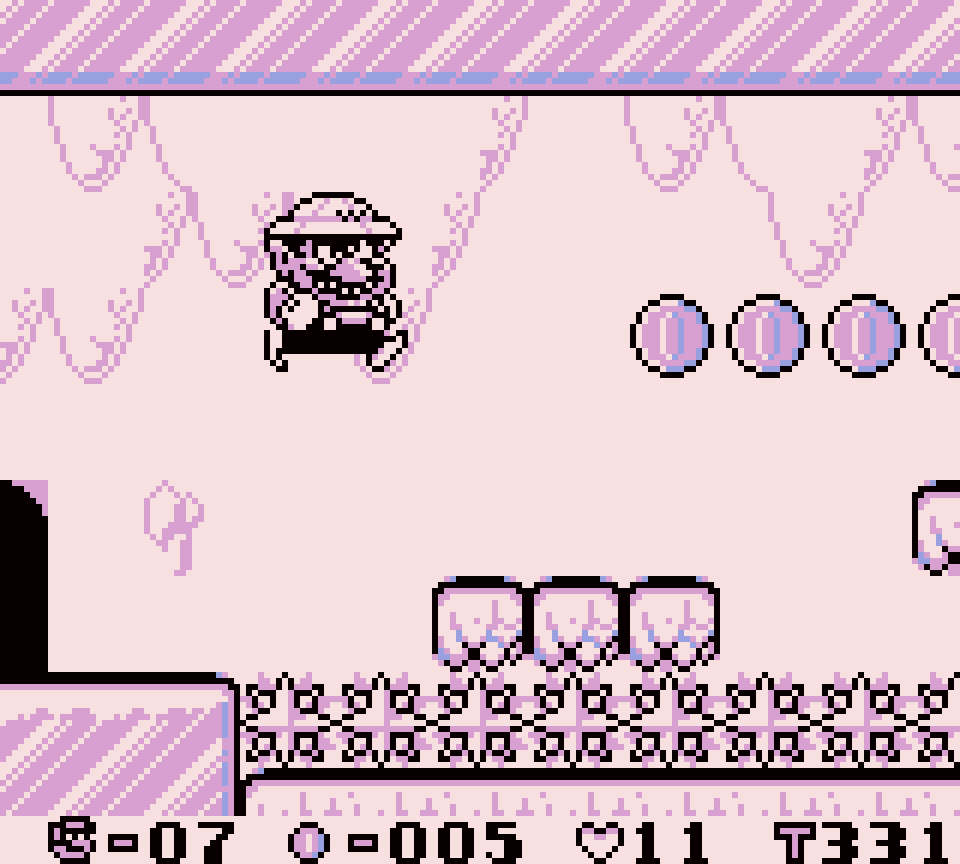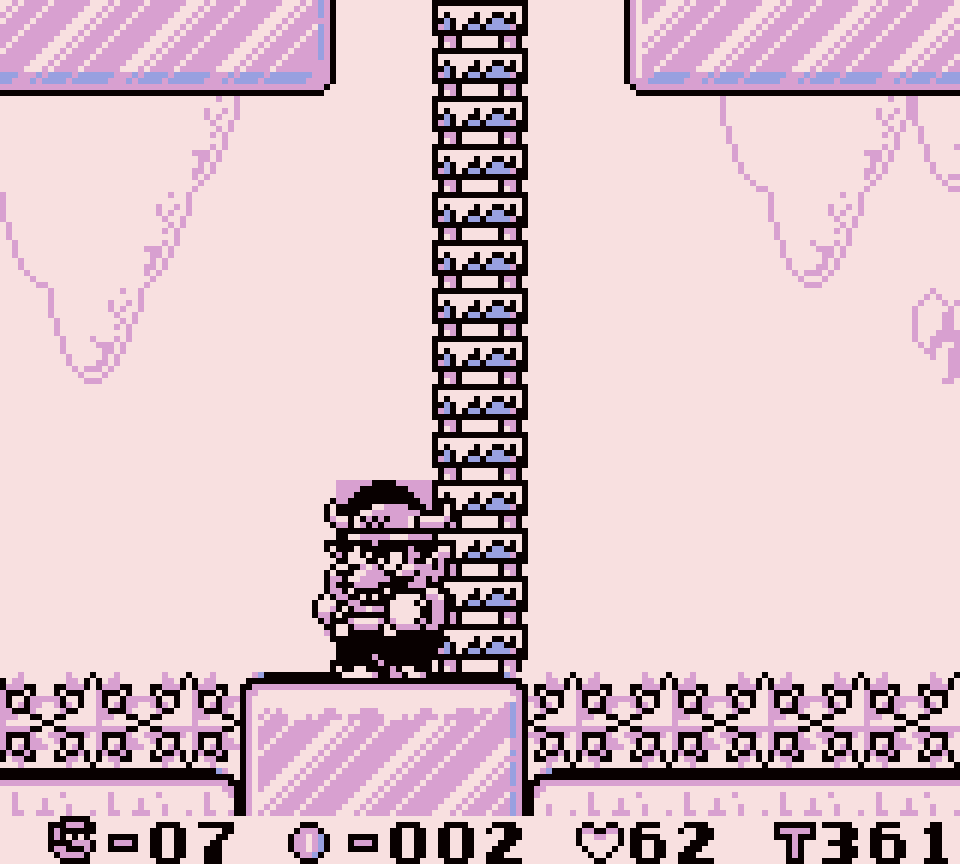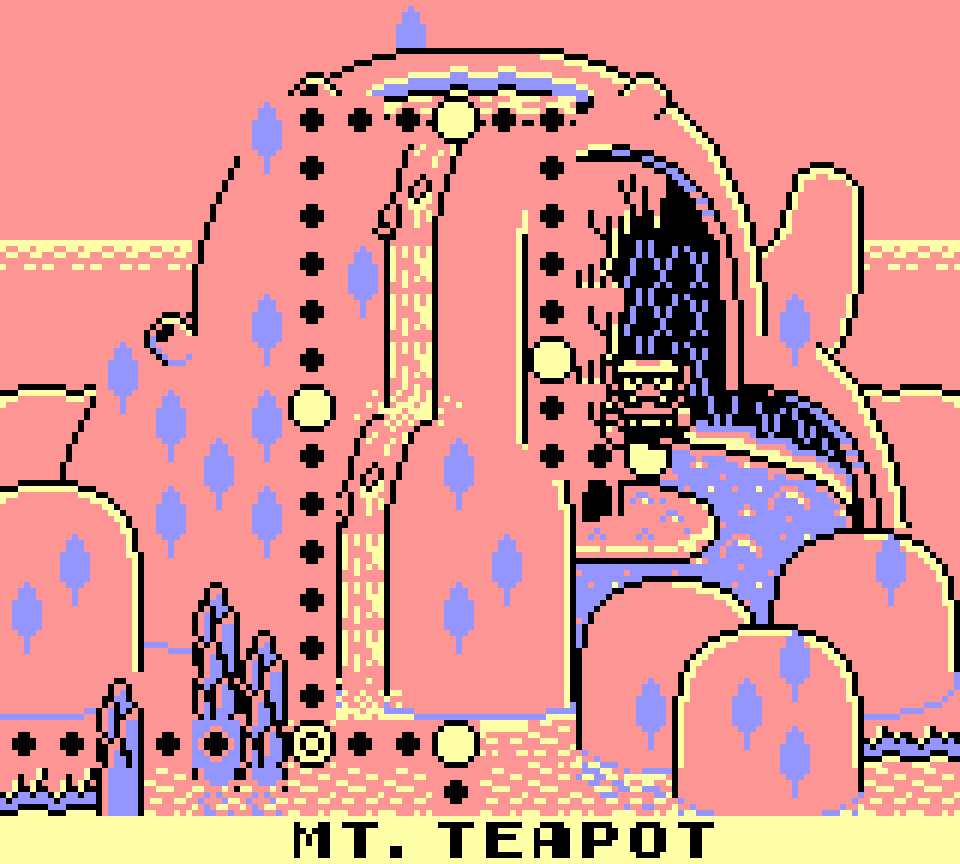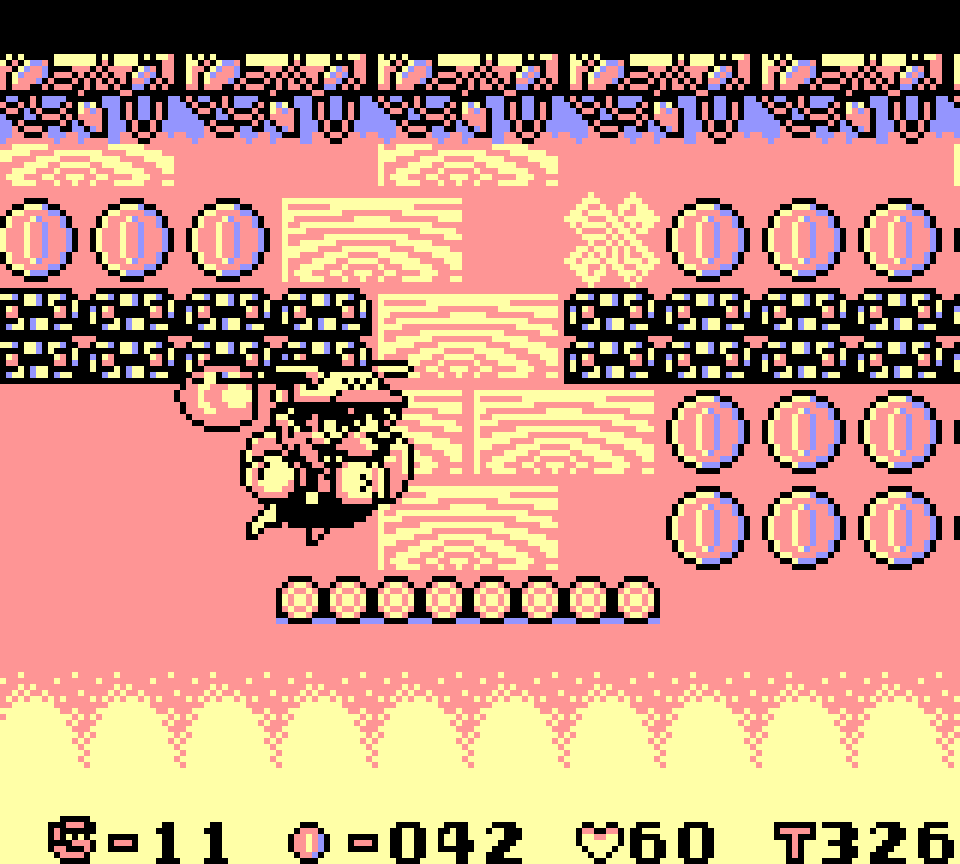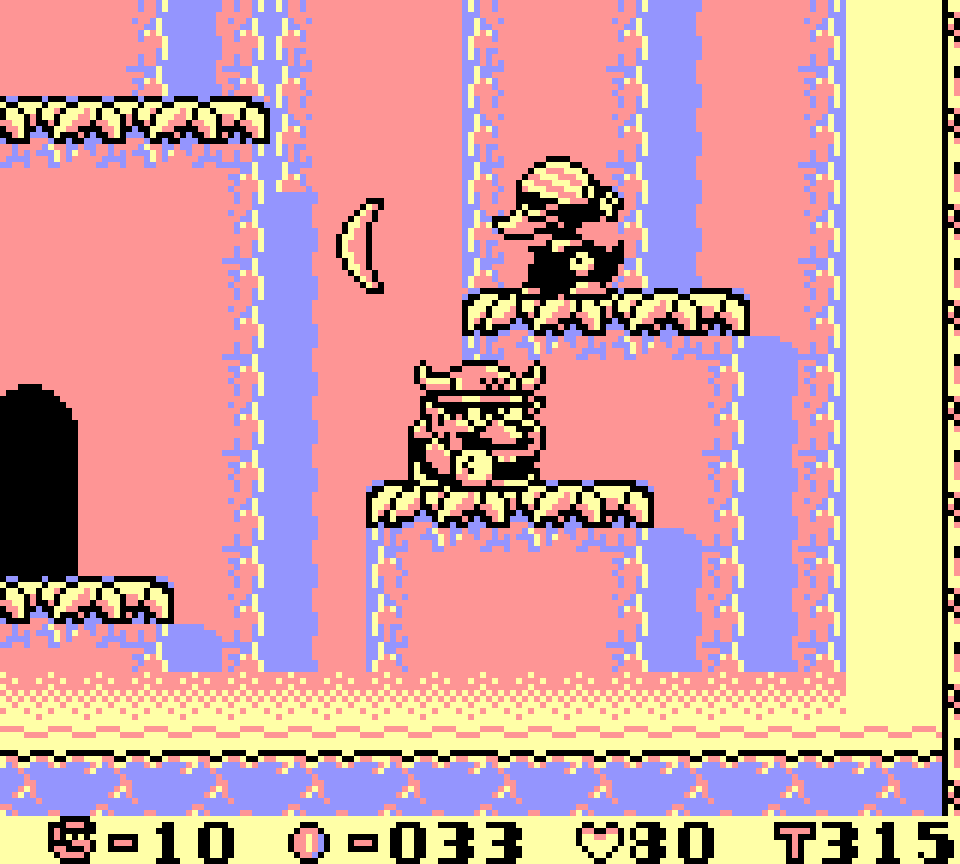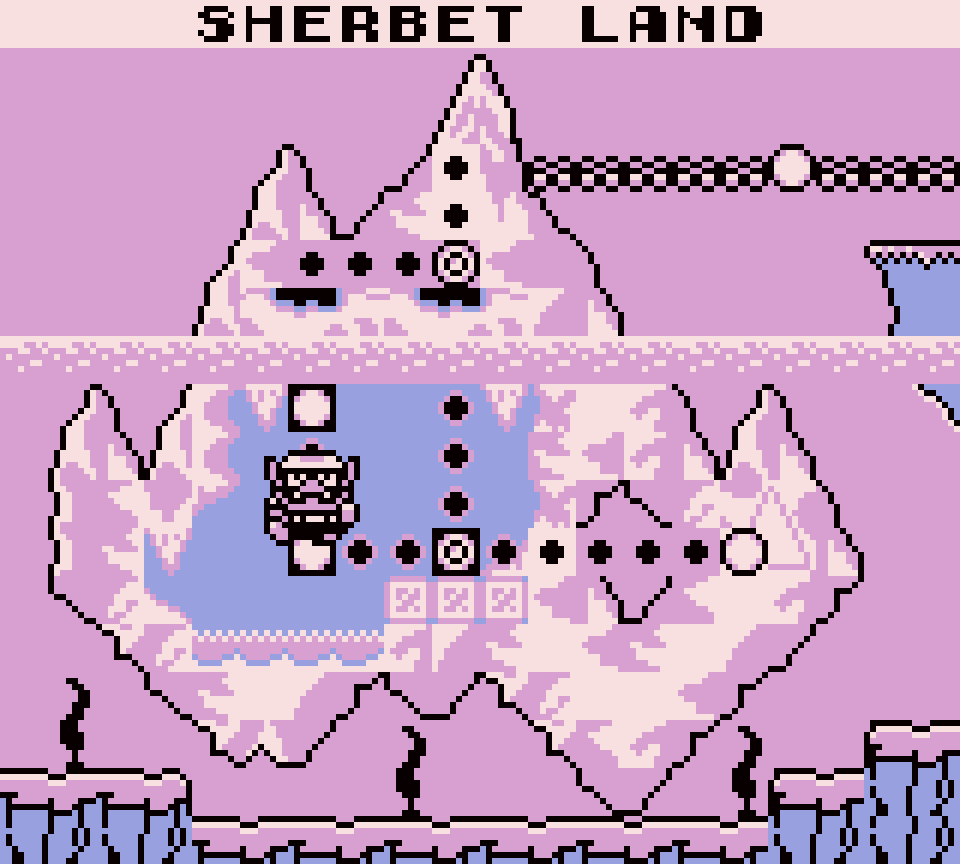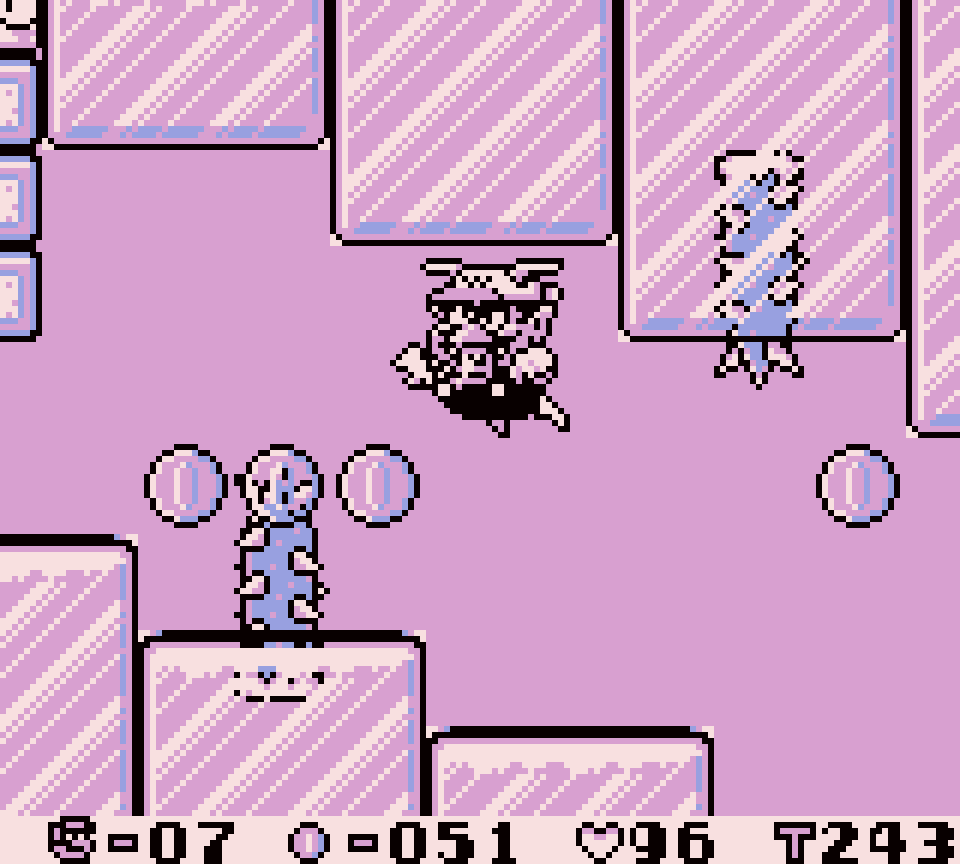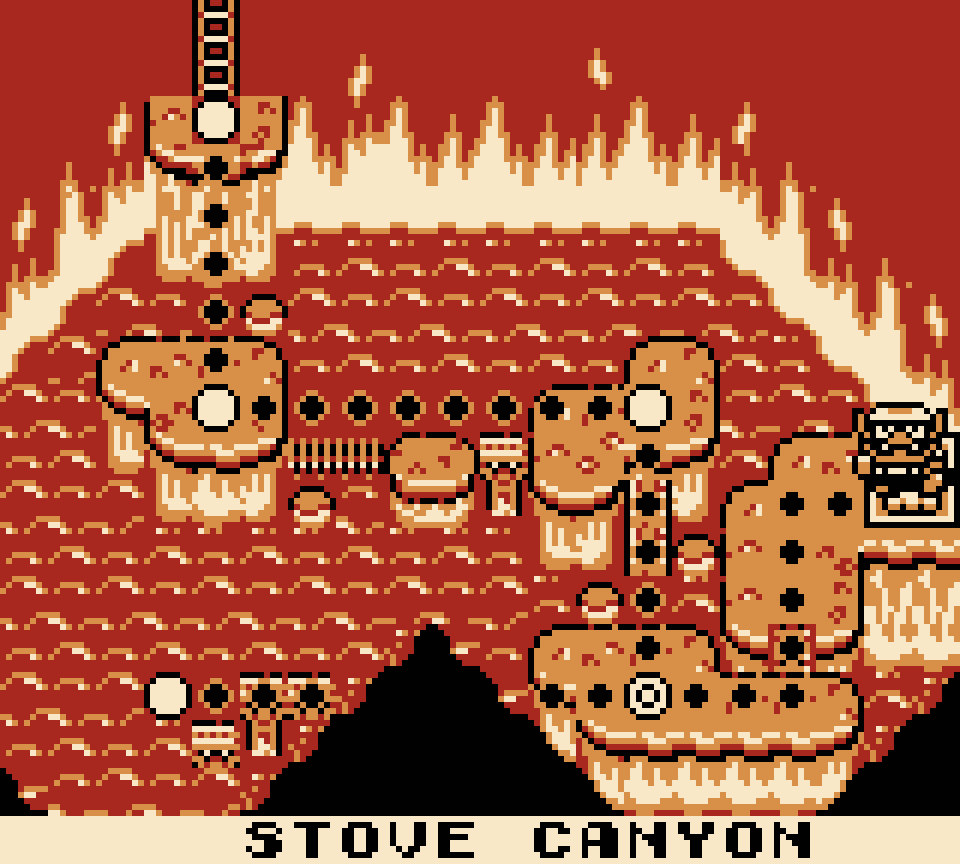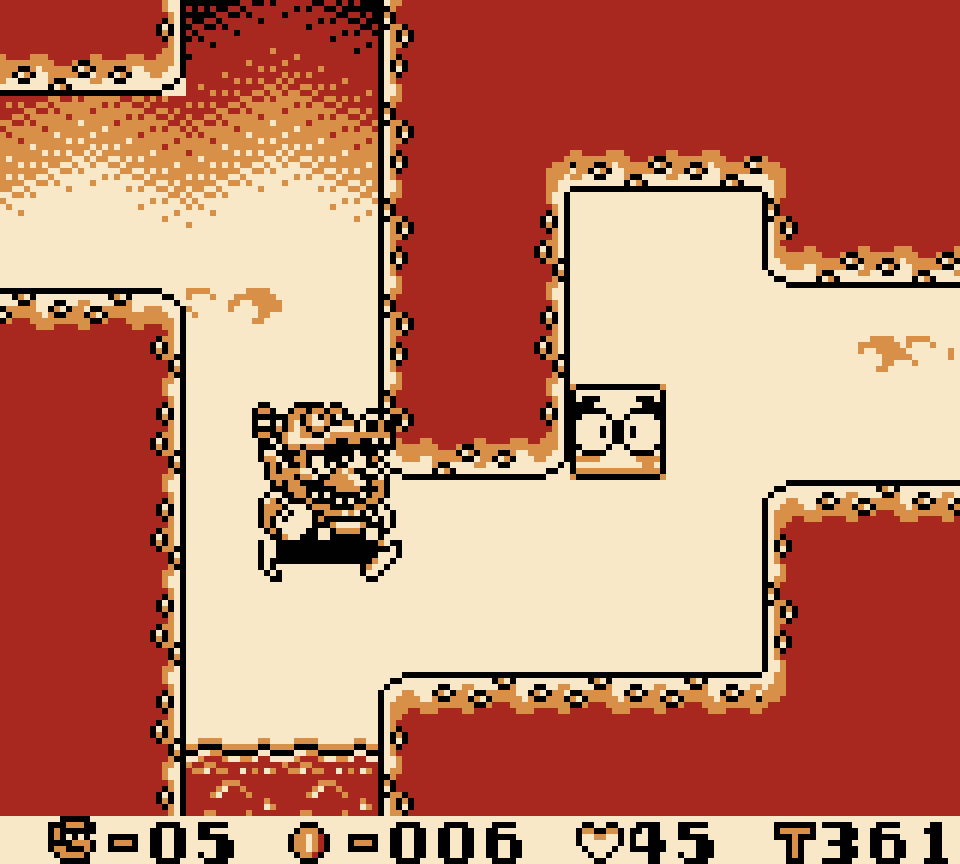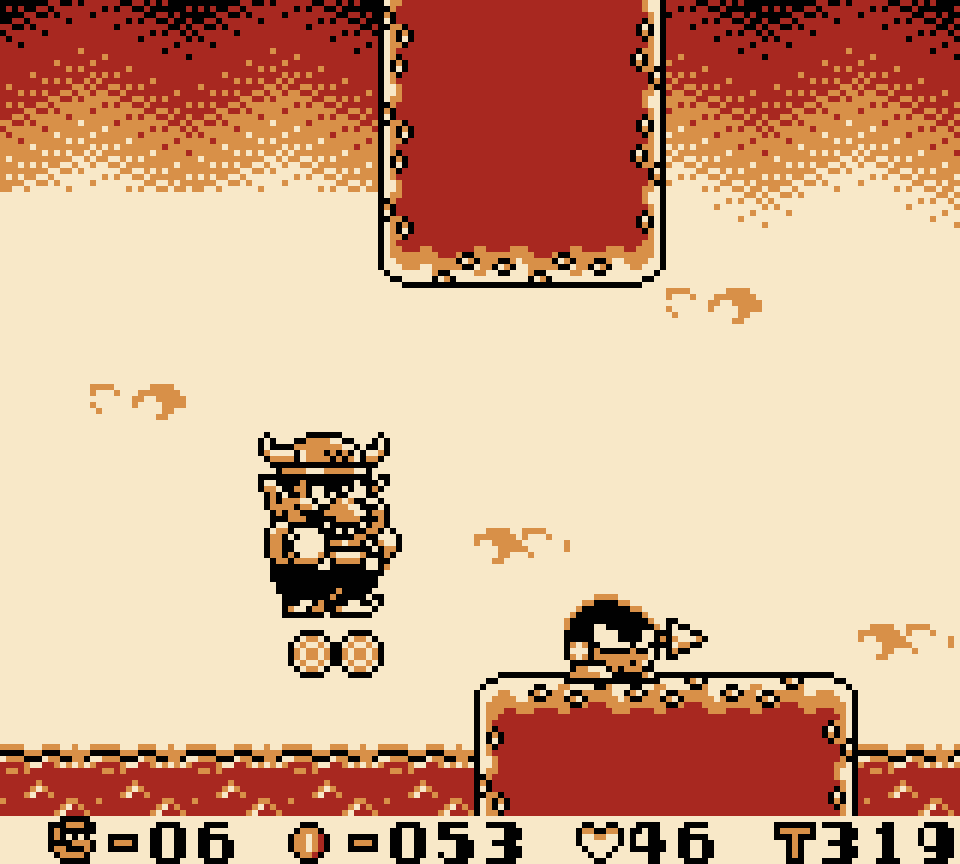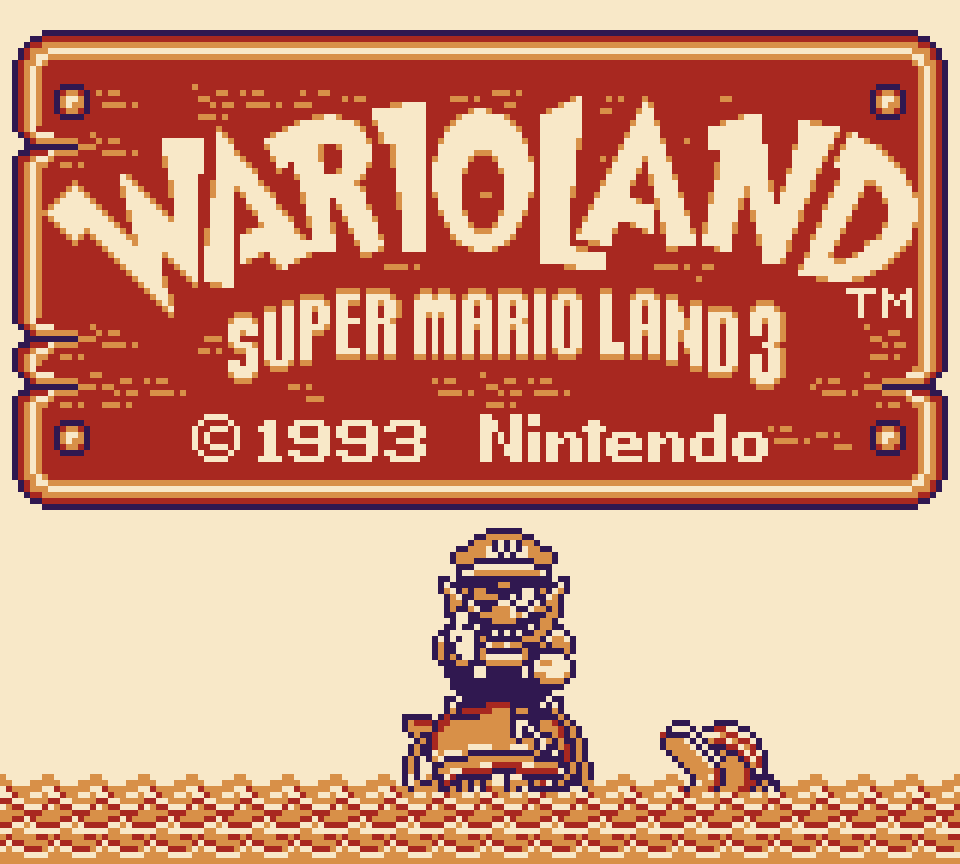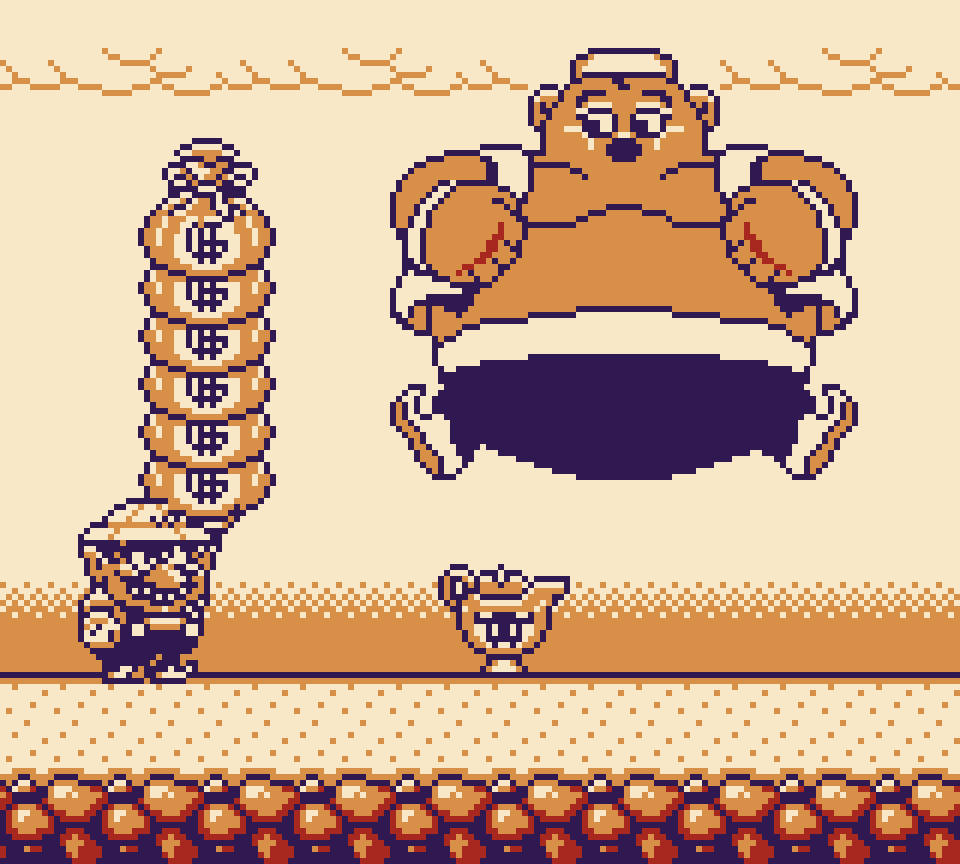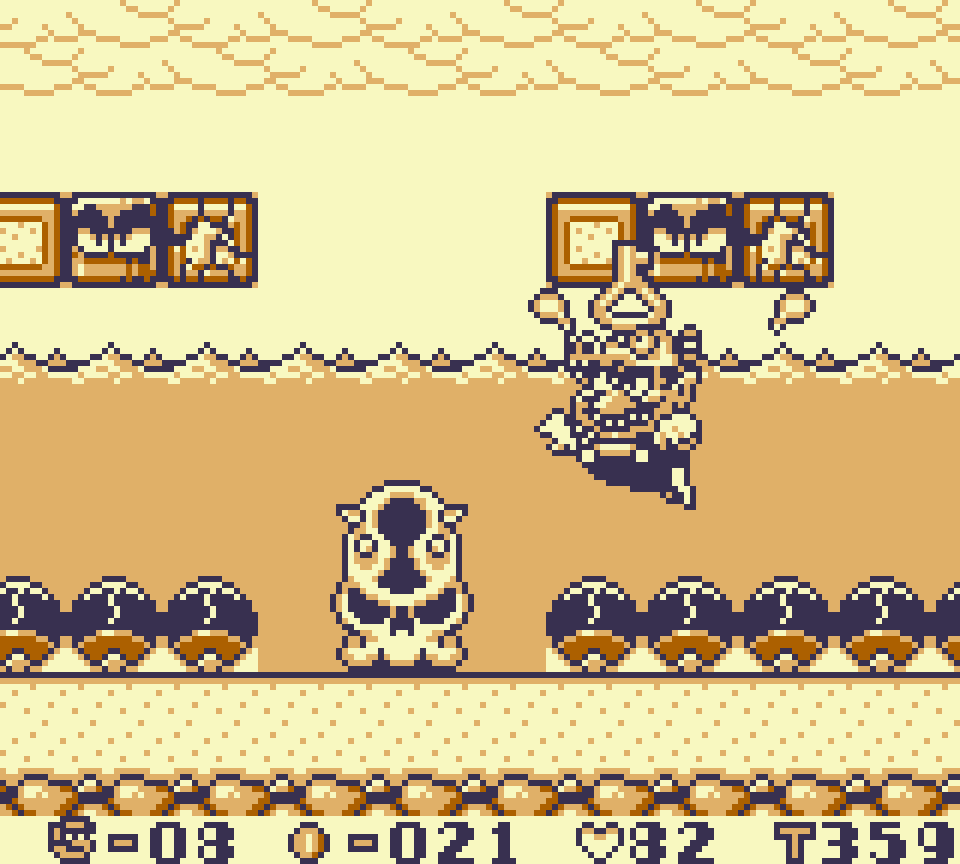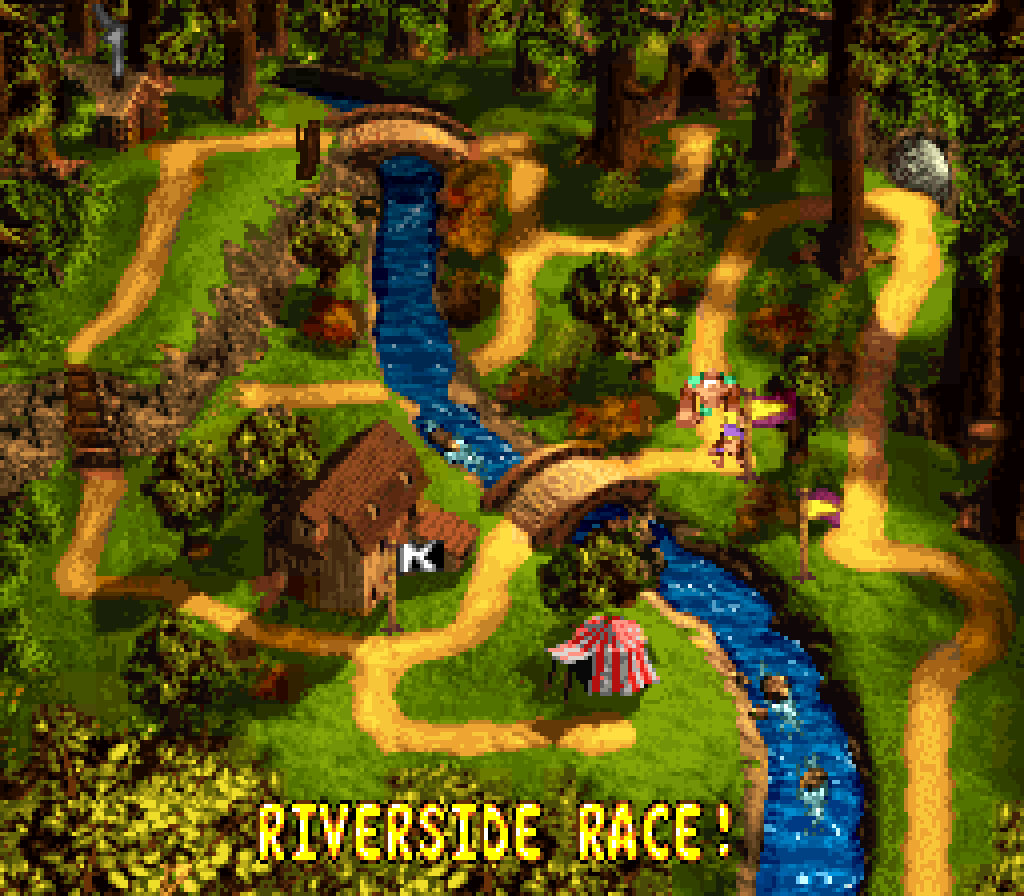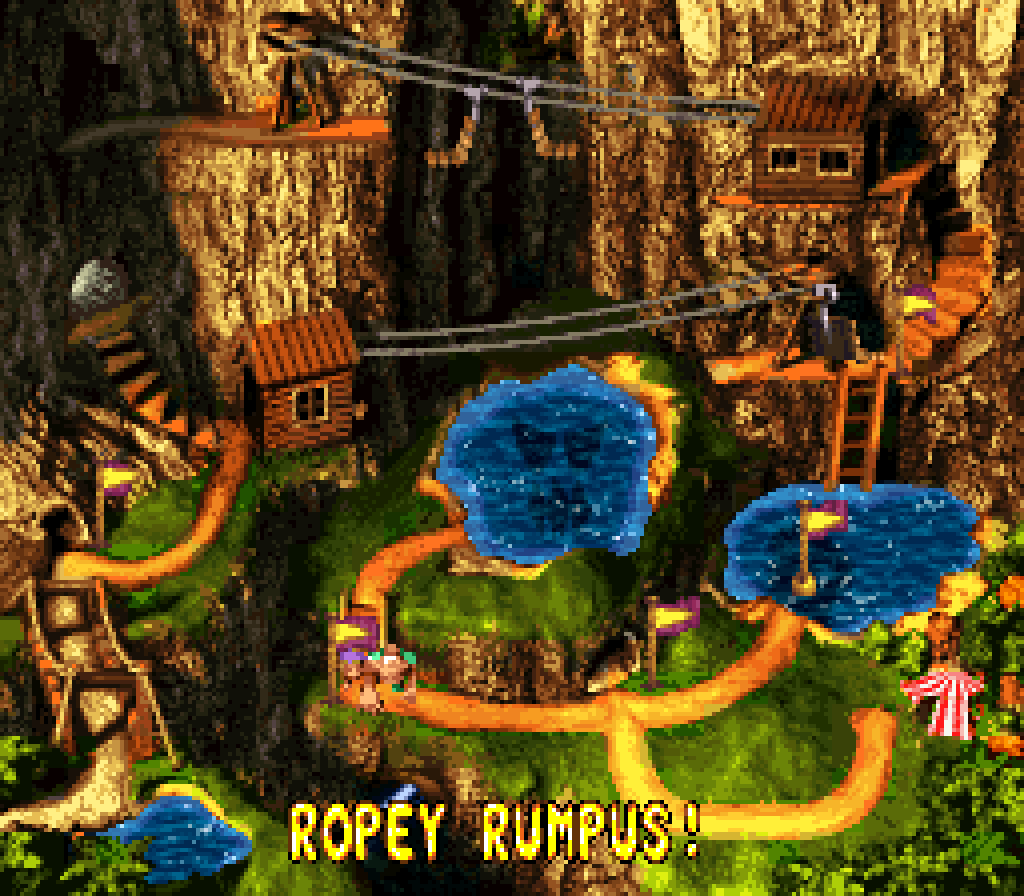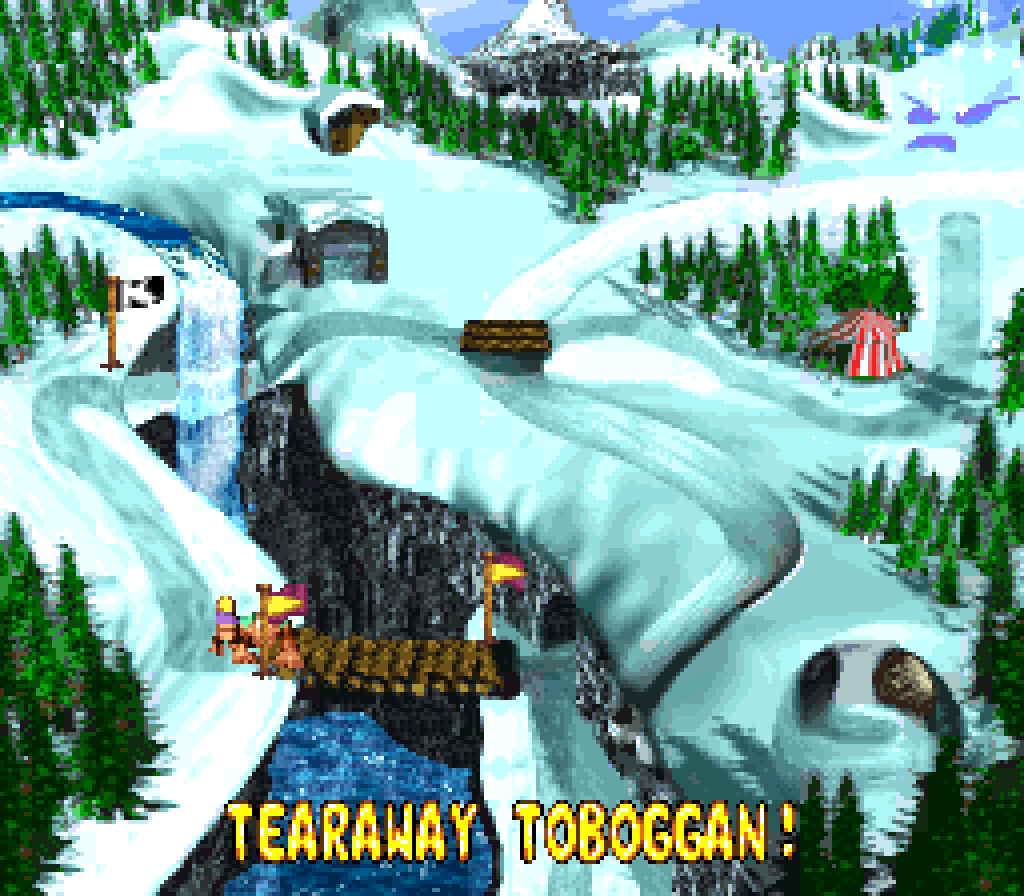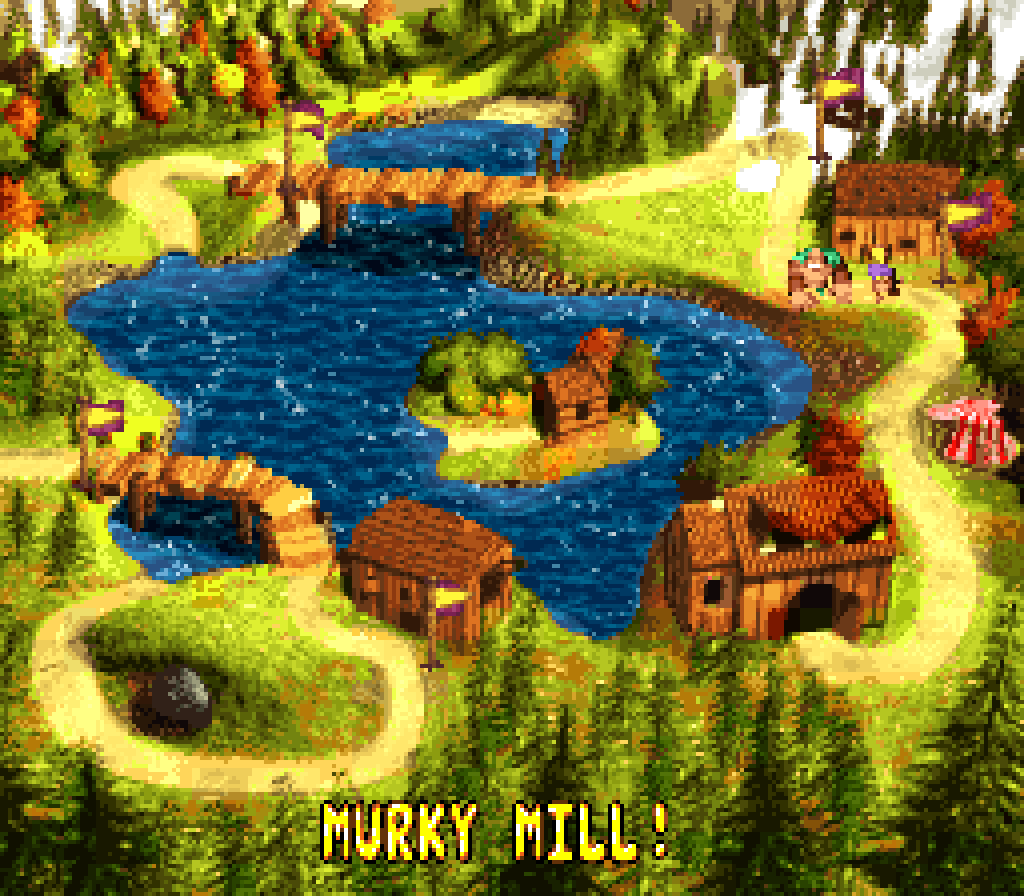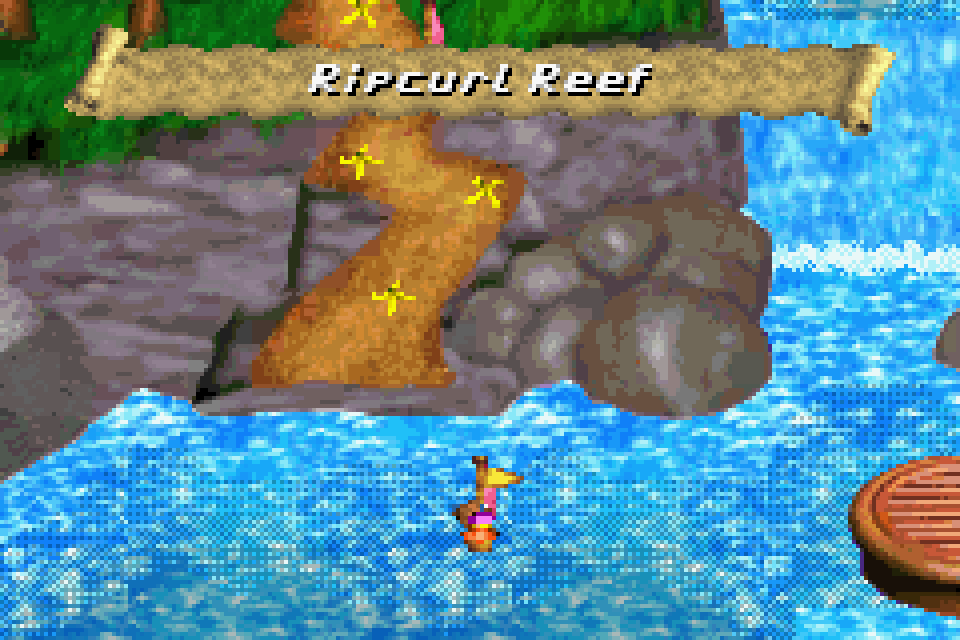11. Course No. 18
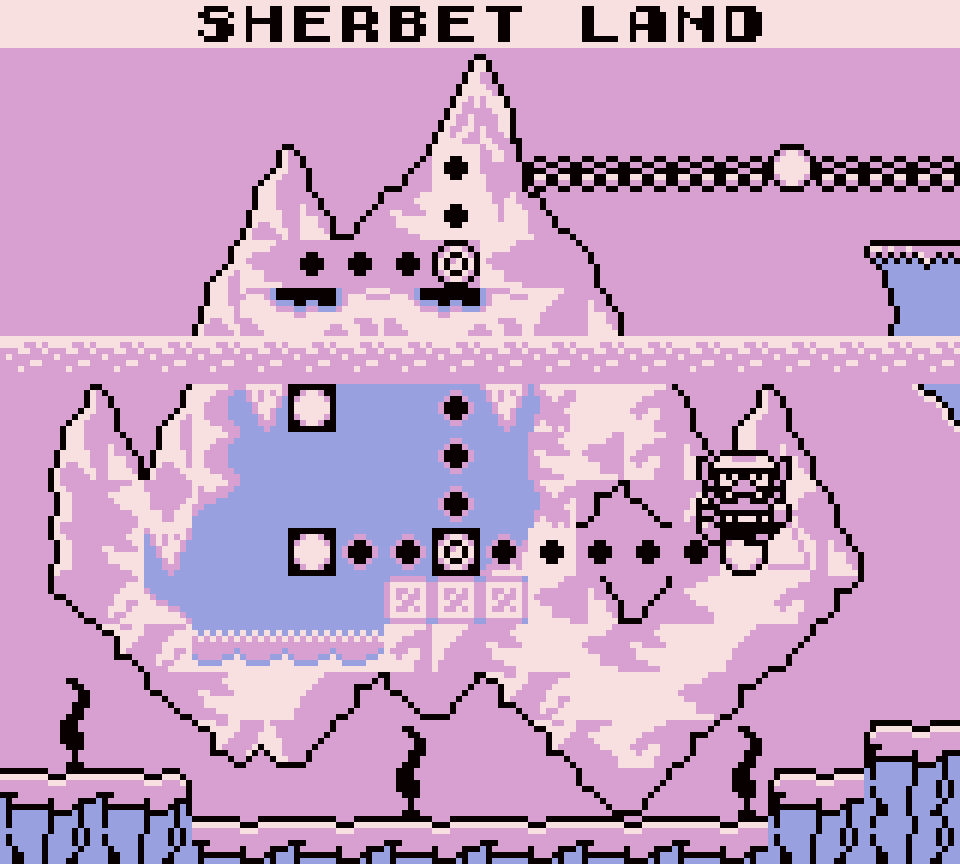
This level saves its best ideas for the treasure, which is fitting, as beating this level doesn’t open anything else. After a bridge o’ switch blocks o’er spikes you reach a long path o’ spikes you can’t cross without taking a hit or maybe using the jet powerup if you have it & a door. @ the end o’ that door’s room is a switch & ’nother door. Going thru this door will seem to lead you back out where you entered, but with a bridge newly created before you, but that’s wrong: this is a repeated setpiece later in the level. If you instead go back to the door in which you entered the switch room & exit that way, you’ll see a newly created ladder just beside the door, leading to the path toward the key.
